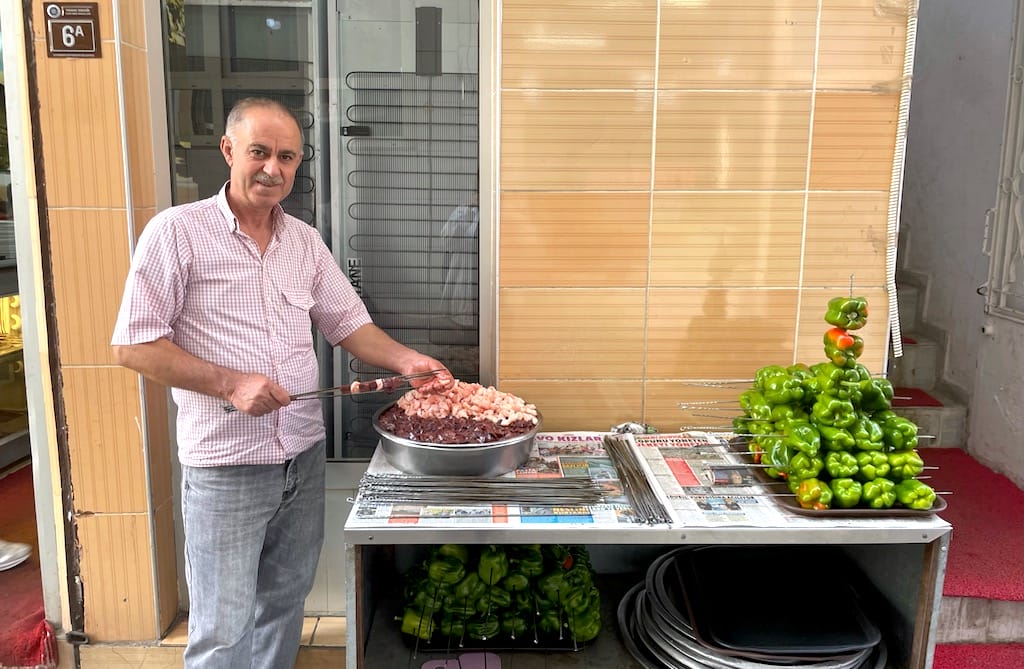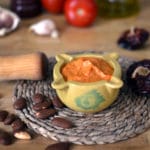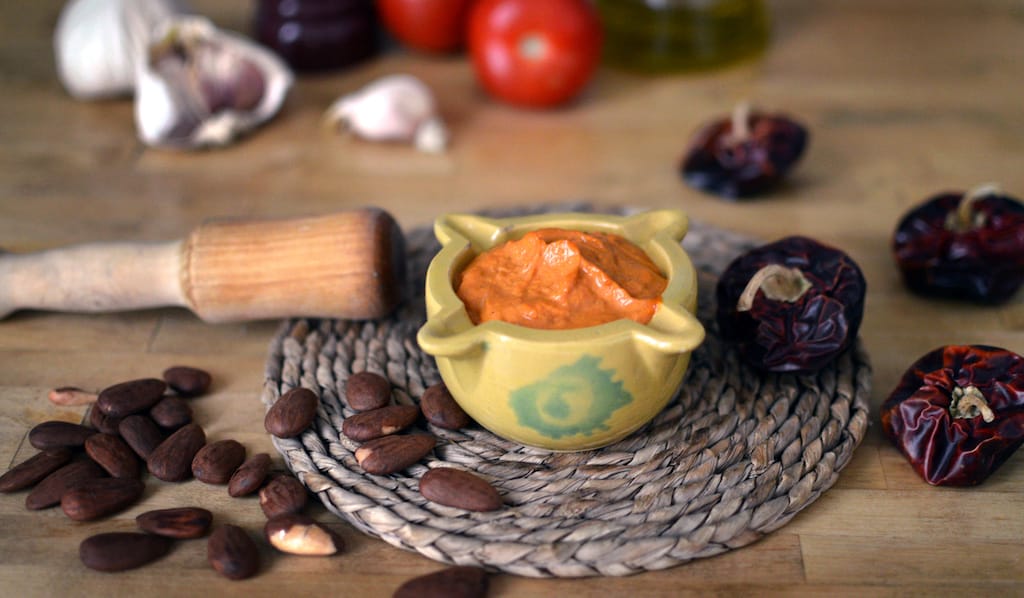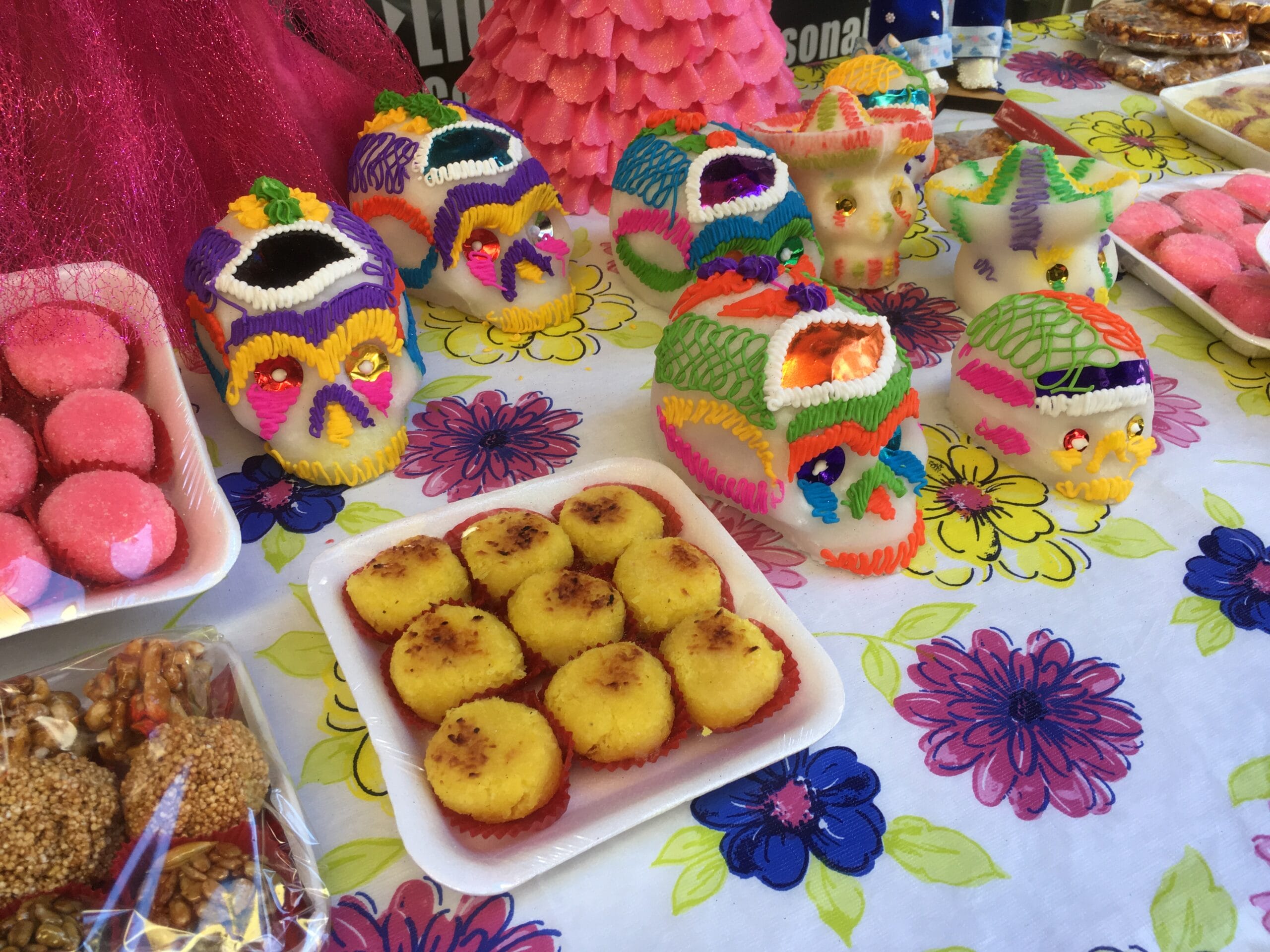If there is one thing that we learned throughout our time in Diyarbakir, it is that everyone here has their favorite liver place. We traveled to this southeastern Turkish city in the hopes of discovering the “best liver,” the best example of the ancient city’s delicacy, but upon arrival realized just how insurmountable a task that was. Discovering the best liver in Diyarbakir is like trying to discover the best slice of pizza in New York. Instead, we contented ourselves with a sampling.
We started our “liver tour” – as we came to call it – near the entrance to Sur, the ancient center of Diyarbakir (named Amed in Kurdish). Sur is a storied place – it has been settled since 7500 BC, according to archaeological records, and has housed empires from the Hittites, to the Persians, to Alexander the great. The ancient city is surrounded by walls (surlari) thousands of years old. The area was, for most of Turkish republican history (after the Armenian Genocide until 2015), densely populated primarily by Kurdish people. It was a poorer area, but one steeped in layers of culture – within the walls of Sur, there were churches and synagogues alongside mosques. The remnants of the Armenian and Jewish populations that once lived there remained.
In 2015, however, Turkish armed forces descended on Sur to quell an uprising that had been sparked by the end of peace talks between the Turkish government and the pro-Kurdish separatist Kurdistan Workers’ Party (PKK), as well as the killing of a lawyer advocating for peace named Tahir Elci in the city center. Two of the city’s seven neighborhoods were destroyed, while the others were severely damaged. Surp Giragos, Diyarbakir’s Armenian cathedral, was reduced to its frame.
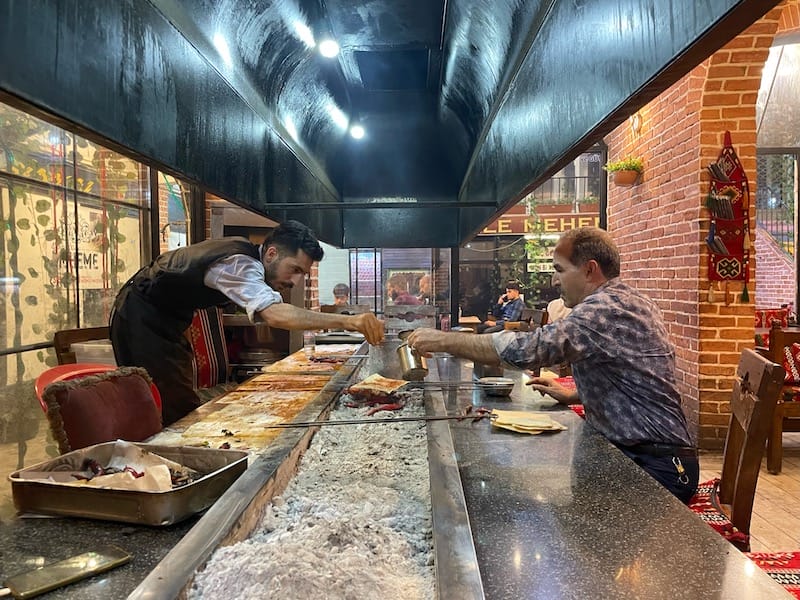
The city has since been rebuilt by Turkey’s housing agency, TOKI, but in a design reminiscent of a middle-American shopping mall, buildings so inauthentic to the area that they have sparked protests in local government, and construction has been stalled. However, some bits of the city’s past remain, such as Cigerci Xale Meheme, our first stop on the liver tour.
Liver is prepared by ustas (experts), and Meheme Usta was considered the best around. He has passed, but his legacy lives on in the smoke-and spice-filled restaurant his trainees now keep running. We walk in straight from the airport, near 10 p.m., and garner looks. The restaurant is filled with Kurdish men, and we are decidedly not. However, we are immediately welcomed into the fold; the server, Hasan, insists we sit next to the open charcoal grill. “The best seat here,” he says.
Halil Usta takes fat, fresh chunks of liver and fat from a container on a shelf next to him and coats them thickly in a blend of pepper and spices. The liver must be fresh, he says, for it to have its signature sweetness and tenderness. He skewers them on a metal sis – a piece of liver followed by a piece of fat. Then, he places the long skewers over hot coals next to spicy peppers and juicy halves of tomatoes. As the liver cooks, fat drips and sizzles onto the coals, and he douses it in butter and oil. Diners watch hungrily as the organs cook, cleaning their hands with wet naps (islak mendil) in preparation.
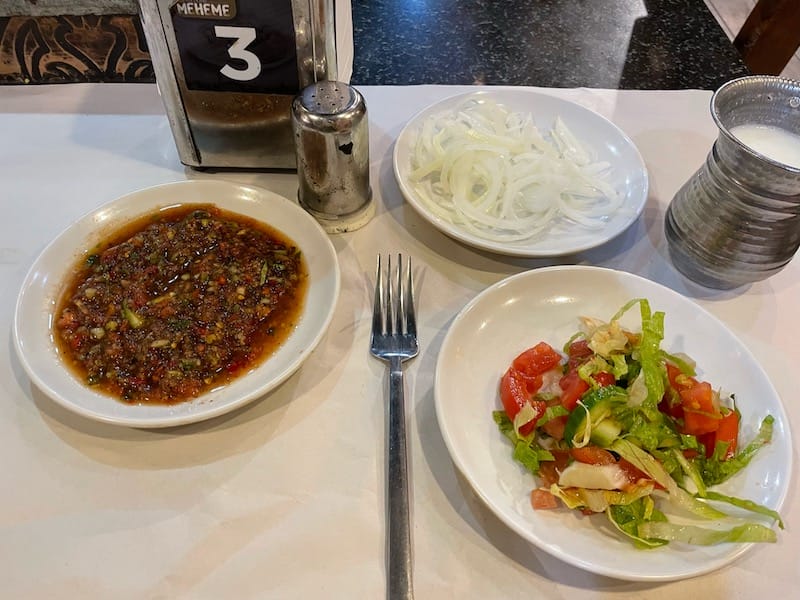
As a final step, Halil blankets the skewers in fresh lavas, soaking up their juices and spice. He makes our liver for us, using the flatbread like a glove to pull the grilled liver off the skewer. With bare hands bedecked in silver rings, he hands us the roll of liver in fresh bread, steaming. Our mouths are watering. We lay the sumac-spiced onions already placed on the table on top of the meat, then salt it lightly.
The first bite is a revelation. The liver is sweet and tender, and the spices and fat have created a crisp skin on its exterior. Spicy oil drips down our hands onto paper placemats. We eat the first roll quickly, then a second. We ask Halil if we can make the third porsiyon ourselves; he obliges. We forego bread this time to focus on the liver – more crisped this round – we don’t want to get too full.
We walk slowly through the darkened, sodium lamp-lit streets to our hotel, sated – perhaps overly so.

The following morning, we wake early for our first liver of the day. As Halil Usta told us, liver can be eaten any time of day, but is best in the morning, when it’s fresh. We head to a nondescript restaurant just outside the Sur city walls, Umut Ciger. Halil promised the liver in the morning would be fresher, but we are disappointed after Halil’s expert preparation. The liver at Umut is dryer, and cut into smaller pieces. The sides served on the ubiquitous paper placemats are delectable – onions covered with a generous sprinkling of sumac and isot (a smoky dried hot pepper) and heaps of fresh tomatoes and herbs. However, the liver lacks the tenderness of Halil’s; the well-spiced meat still betrays a slight taste of blood. That, according to Halil, is the mark of subpar liver.
That evening, we try again. We get back from reporting late and most of the places we’ve been recommended – many of which are in Diyarbakir’s main covered market – are closed. Hesitantly, we walk through the streets of Sur to Cigerci Remzi Usta, one of the most famous spots in the old city. With restaurants, we tend to trust the unassuming, even the grimy, over the flashy. Remzi Usta, however, is everything but unassuming.
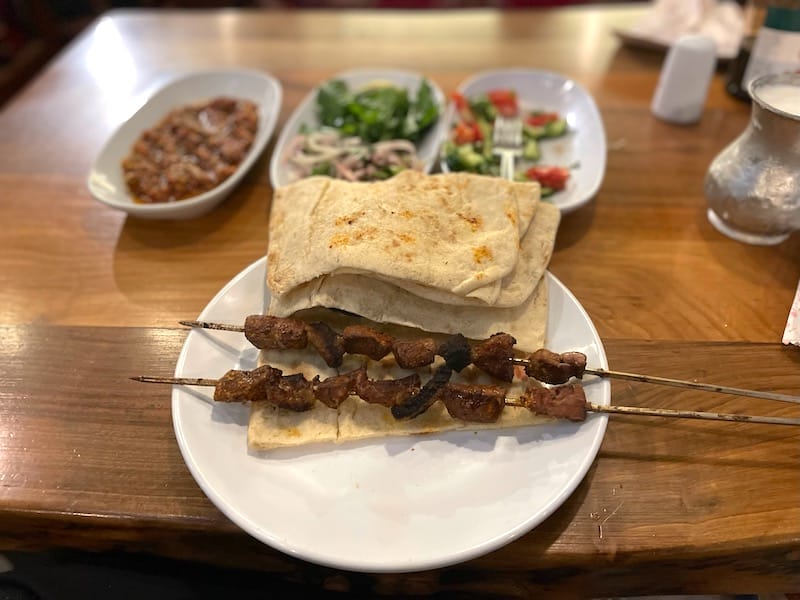
Down a well-lit alleyway – a signature feature of Sur, especially before the war – Remzi is a three-floor complex with brightly lit signs and waiters in matching uniforms. It reminds us of a castle, or at least a fortress. By the door, a lit-up sign reads “I <3 Diyarbakir.” Crowds of diners line up to take selfies.
Suffice it to say, our expectations were not high. However, when two skewers of steaming liver arrived on our table – we ordered low – we were happily surprised. The seasoning was perfect – where other places required us to salt the liver to counterbalance the sweetness of the meat, Remzi Usta’s was perfectly seasoned. The spices thickly coated the meat, cut into slightly smaller pieces than those at Xale Meheme. The meat was not quite as tender, but we couldn’t be sure if that was because of the restaurant or the time of day (Halil’s warning echoed in our minds). The liver accouterments – isot and sumac onions and a range of fresh herbs, including parsley, arugula, and mint – were also impeccable. The waiters laughed, sensing our surprise.
The next morning brought with it tea outside of Ulu Camii near dawn and a wander through Diyarbakir’s covered bazaar, also referred to as the Armenian Market. Diyarbakir once had a substantial Armenian population, driven out by the Hamidian Massacres of the 1890s – there was a spate of violence called the Diyarbakir Massacre against Armenians in 1895 – and the Armenian Genocide beginning in 1915. Remnants of the community remain, such as Surp Giragos Cathedral and this market, where many Armenian shopkeepers used to sell their wares.
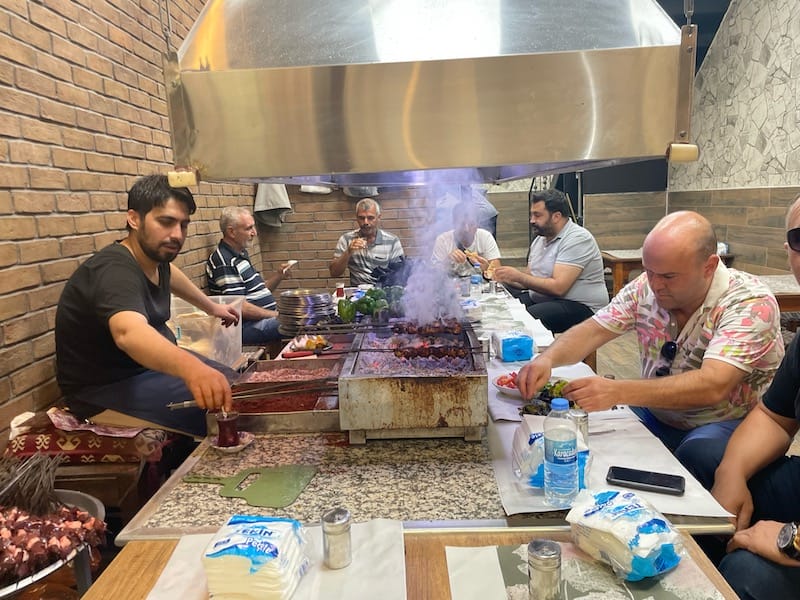
In the center of the market is a liver place called Husnu Cigerci, set between copper and metalworking shops. Sawdust and the smell of soldering permeate the air as we order our skewers of liver from the small shop – no more than a large open grill, a few chairs, and a few seats scattered in the bazaar’s throughway. The owners look bemused – how did we, outsiders, find this place? I told them a researcher friend had recommended it. They looked pleased.
Husnu Cigerci reminds us of the importance of bread to the experience of grilled Diyarbakir liver. Before the meat even came out, the young waiter in charge of running our food into the passageway brought out a steaming pile of fresh lavas. Peckish, we started nibbling, topping the bread with the – you guessed it – sumac and isot-coated onions that came aside. This would have been a satisfactory breakfast in and of itself but was made all the better by the liver that came out just a few minutes later.
Eating Husnu’s liver in the passageway of the covered bazaar was, by far, the best overall experience of the trip. Somehow, compared to the flashing lights of Remzi Usta, it felt “true.” The liver itself was also delectable, and spicy. Coated thickly in pepper and brushed with butter, the meat had the telltale sweetness of ultra-fresh liver, tender and soft. The restaurant prides itself on this – it only serves customers until the fresh liver runs out, usually a little after lunchtime. In Diyarbakir, eating good liver means getting there at the crack of dawn.
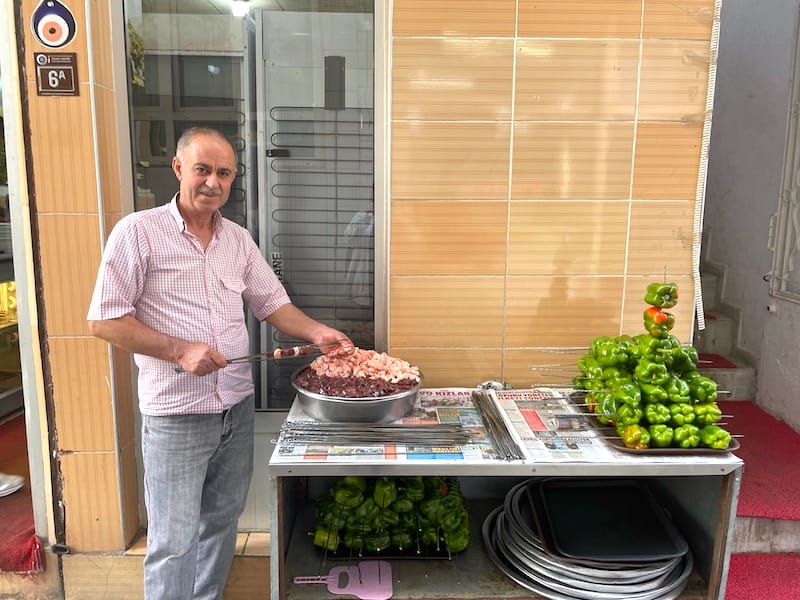
On the way to our final stop of the trip, we step into Ramazan Cigerci, a shop down a side street a few blocks off of the bazaar. A tour guide friend said it was not to be missed. We found Ramazan Usta, the owner, threading fresh liver onto skewers on the street outside the stop. On one side, he had a vat of milky-looking fresh liver. On the other, peppers and tomatoes. When he finished a skewer, he would pass it on to the team inside, who would slide it onto the smoking grill.
The shop itself is exactly the unassuming type we look for, that which inspires confidence that the food will be delectable. This impression was not wrong. We grabbed one liver durum – a wrap – to go and shared it as we made our way out of the old city, oil dripping down our wrists and onto the hot, dusty pavement below.
We saved the best for last. A friend who considers himself a “Diyarbakir foodie” recommended Cigerci Apo, near the city hall. We went every day from when we arrived, only to find the restaurant closed, the staff apologetic. Like the ustas at Husnu, the staff at Apo only serve liver while it’s fresh, and that is usually only until midday. Finally, on our last day, before our flight, we arrive at Apo early in the morning, as we promised Abdullah (Apo) Usta we would the day before.
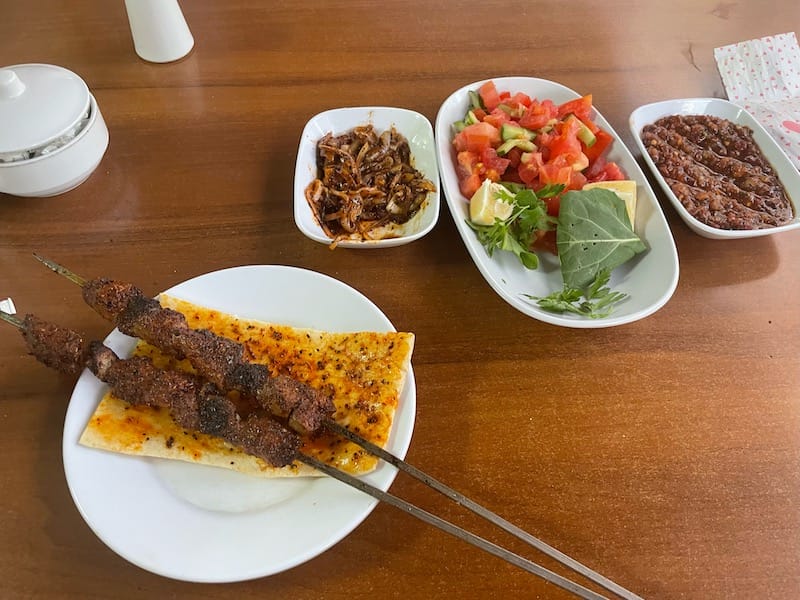
After three days of eating practically nothing but liver, we were beginning to tire of it, and by the time we arrived at Cigerci Apo, we were almost hesitant to eat more. Abdullah himself sat us down outside his restaurant, tucked in the bottom of an apartment building. He sat with us and told us about his career – he grew up in Diyarbakir, he said, and started working at Xale Meheme when he was a teenager. He worked there for 11 years beginning in 1968, then opened his own shop. When he talked about Meheme Usta, his eyes clouded over – he said that he’d taught him everything he knows and that his only goal is to carry on his teachings.
He invited us to the grill, where he showed us how he prepares his liver. Like at the other restaurants we’ve been to, he skewers liver and fat on a metal sis, coats them in spices, then places them over the grill. But then, he takes a brush soaked in fresh melted butter and lathers it over the meat as it’s cooking, then sprinkles it with more spices. He turns the liver gingerly over the coals, then does the same on the other side.
The result is the best meal we’ve had in months. We use the fresh, spiced bread he placed over the liver at the last moment to coax the chunks of meat off the skewer, then top it with a dribble of onion, fresh herbs, and raw onion. The warm bread is soft, the meat tender and buttery, the herbs and onion offsetting the fattiness. We can’t speak for a moment after we take a bite, then we take another, and another. We end up eating three skewers each, as Abdullah looks on, smiling.
What’s the secret, we ask, stuffed to the brim? “Fresh liver,” he says, smiling.
Erin O’BrienErin O’Brien
Published on November 08, 2022
Related stories
March 20, 2024
BarcelonaServed as a sauce, romesco is certainly striking: It has an intense dark orange color and a dense texture that saturates and blankets whatever you dip in it. Once in the mouth, you get a piquant touch of vinegar, which is soon enveloped by the nutty creaminess of ground almonds (or perhaps hazelnuts) and olive…
October 29, 2017
QueensOn our culinary walk in Queens, we spotted some skulls made of sugar and marzipan that will be used as offerings for Day of the Dead (Día de Muertos), which officially starts on October 31.
November 6, 2017
LisbonBarbara Abdeni Massaad may be an award-winning food writer and photographer, but she is also a humanitarian. After spending quite some time with the Syrian refugees who were living in horrible conditions not far from her home in Beirut, Barbara took her camera and began photographing people in the camps in Lebanon, especially children. This…







































